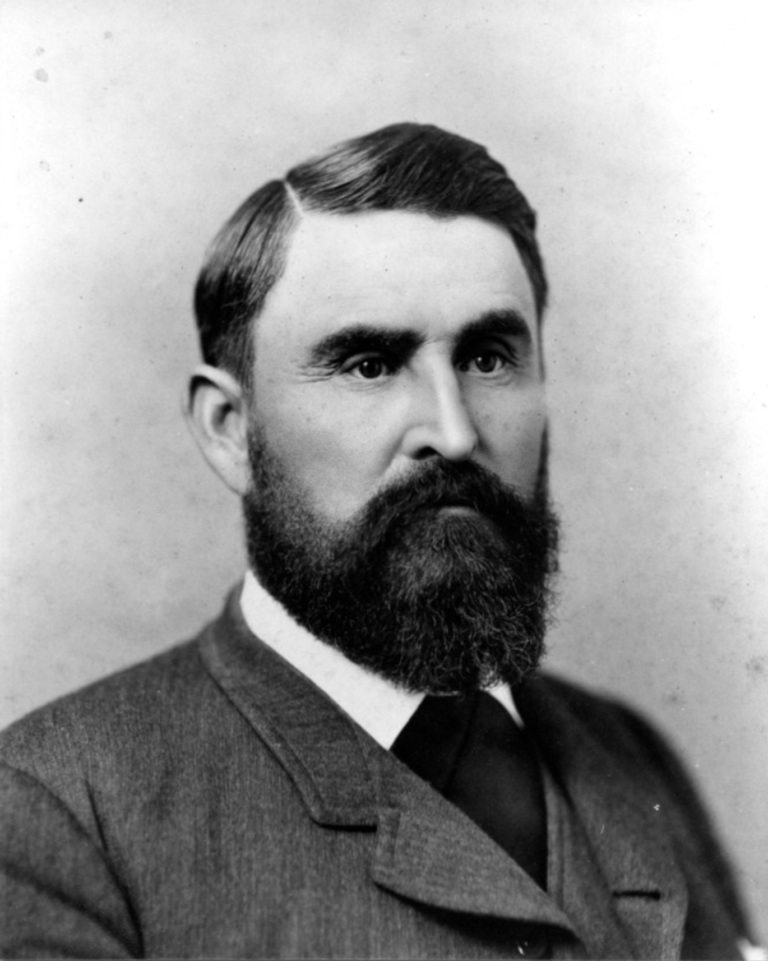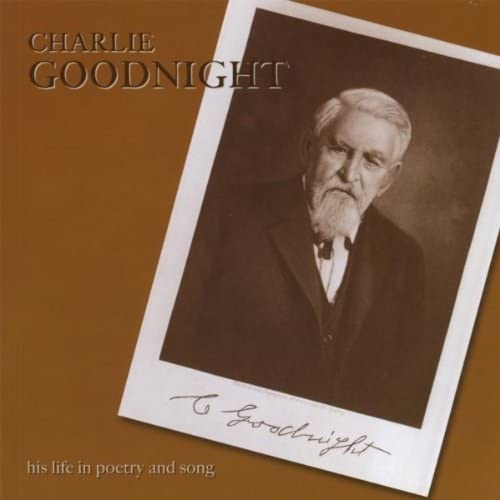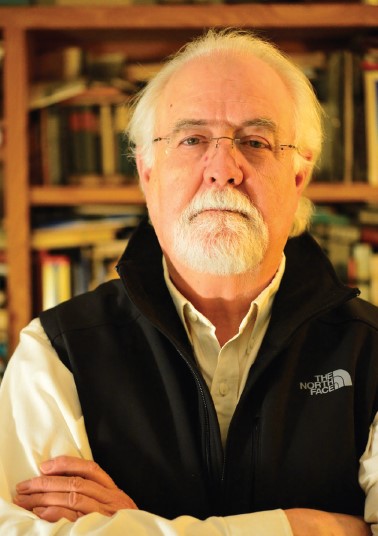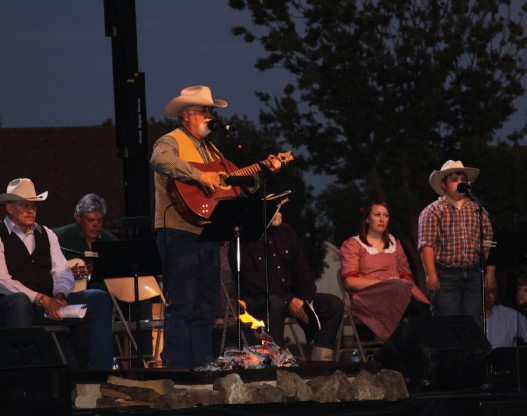Charlie Goodnight & Andy Wilkinson: Reflections on a 30-Year Masterpiece
An essay by John R. Erickson
Charles Goodnight, founder of the JA ranch in Palo Duro Canyon, was a man of enormous courage, vision, strength, integrity, intelligence, and endurance; a trailblazer, explorer, fighter, entrepreneur, innovator, amateur naturalist, and observer of all things within his field of vision. We know about him because J. Evetts Haley captured his extraordinary life in a biography that appeared in 1936 and has never gone out of print.
Several years ago, in an essay that ran in Ranch Record, I pointed out that three generations of writers, artists, and musicians have drawn inspiration and story material from the example of Charles Goodnight. As Elmer Kelton put it,"A lot of us owe some royalties to the Goodnight estate." That long list included me, John Graves, Elmer Kelton, Benjamin Capps, Red Steagall, Baxter Black, Larry McMurtry…and Andy Wilkinson.
Andy had a special connection to the man and the legacy: Goodnight was his great-great Uncle Charlie. Andy grew up listening to stories told by his mother and grandmother and played on a buffalo-skin rug the Old Man had given the family. In 1994, he published a book-and-CD combination called Charlie Goodnight: His Life In Poetry and Song. It was, and still is, an extraordinary piece of work.
History, Poetry and Song

Haley looked at Goodnight through the lens of prose history, while McMurtry, Kelton, and Capps chose the medium of historical fiction. Wilkinson took a very different approach: fifteen original poems and fourteen songs that followed Goodnight from his youth, riding a horse from Illinois to Texas, to his old age, sitting on a porch and thundering about the poor quality of town coffee.
Andy did extensive research on Goodnight, mining Haley's biography and other sources and adding his own family's stories to the mix. What's in the songs you could teach as Texas history, but he was also reaching for truth behind the historical facts.
It was a daring choice of media, poems instead of prose, songs instead of journal articles. In Goodnight's time, the Panhandle-Plains wasn't particularly fluent in poetry. We occupy a land of big horizons and straight lines and our language tends to follow the geography. Goodnight personified that principle: his language was straight, blunt, unsubtle, and prone to storms.
You could make a similar point about our music—country-western, bluegrass, hymns, and folksongs. They tend to be simple and direct, not musically complex. Many of our tunes can be played with three basic chords. Andy's melodies retain that simplicity but incorporate minor chords and variations that add depth without intentional obscurity.
His songs send young guitar players back to their chord books to figure out what he's doing, and what he's doing is musically exciting.

If Goodnight ever wrote or read a poem, played an instrument, or sang a song, I haven't seen a record of it, and a sentence from one of Andy's songs confirms it: "He's not a singer, couldn't carry a tune/In his saddlebags or pocketbook." ("Song For Molly, Mary Ann"). He wasn't a poet or a musician, yet Andy chose to tell his story through songs and poetry. We don't know what the Old Man might have thought of the album, but I thought it was brilliant.
Andy's songs and poems don't just rhyme, they are built of sentences that deliver emotional content that speaks to every age about danger and courage, the vastness of the prairie, and the power of the wind. Other subjects touch the heart:
"White Women's Clothes" captures the wrenching story of Cynthia Ann Parker better than anything I have read or heard.
"Standing Deer's Lament" and "The Last Buffalo Hunt" tell about the other side of Anglo settlement, the tragedy of Native people locked out of what had once been their home country.
"A Woman's Life" expresses an obvious but often-overlooked fact of life on the prairie: it was a lonely place for a woman, listening to the never-ending moan of the wind and talking to chickens in the yard.
Performance
Andy managed to draw some very talented musicians into these recording sessions, most or all of them from the Lubbock area: Alan Munde on banjo; Joe Carr on mandolin; Joe Stephenson on fiddle; Kerry Ford on harmonica; Andy on guitar; and Lloyd Maines on guitar, bass, dobro, and any other instrument they needed.
Singing talent included Buck Ramsey and Andy, as well as Lubbock's amazing Maines family: Lloyd, Donnie, Kenny, Brian, La Tronda, and Lloyd's teenage daughter, Natalie, who later became the lead singer with the Dixie Chicks. Her rendering of "White Women's Clothes" is unforgettable.
Not long after the album came out, I saw Andy at the Ranching Heritage Center's Cowboy Symposium and gave him a torrent of praise. He smiled and said, "It's all Lloyd Maines. He did the arrangements." Well, it wasn't quite "all Lloyd Maines." Lloyd was an incredibly gifted musician who improved everything he touched, but he had something to work with. He took Andy's good musical concepts to a higher level.
Almost thirty years after I first heard the Goodnight album, I still consider it a masterpiece of Texas music and literature. It's so good, in so many ways, it leaves me thinking, "Let's just turn out the lights, lock the doors, and go home. There's nothing left to say." Coming from one author to another, that is high praise.

It also causes me to wonder…do school kids in Lubbock and Abernathy and Amarillo and Perryton even know it exists?
Those of us who grew up on the Llano Estacado have a tendency to define "culture" and "literature" as things that happened somewhere else, far from cow lots and cotton gins. It's a kind of regional inferiority complex and I've struggled with it myself. It arises, in part, from the absence or near-absence of regional literature and music in our schools, which serve as definers and conduits of cultural material.
I hope that at some point in their school careers, our kids will encounter Andy's songs and poetry, because they're more than local history. Andy finds the universal in the particular, a whole galaxy in a raindrop, the story of all mankind in the lives of Goodnight, his wife, his cowboys, displaced Comanches, and poor, tragic Cynthia Ann Parker.
A whole galaxy in a raindrop. That's the kind of thing you'd expect to find in Real Art.
This article appeared in the Fall 2022 issue of the Ranch Record, published by the National Ranching Heritage Center in Lubbock, Texas. Used with the permission of the author and the NRHC.